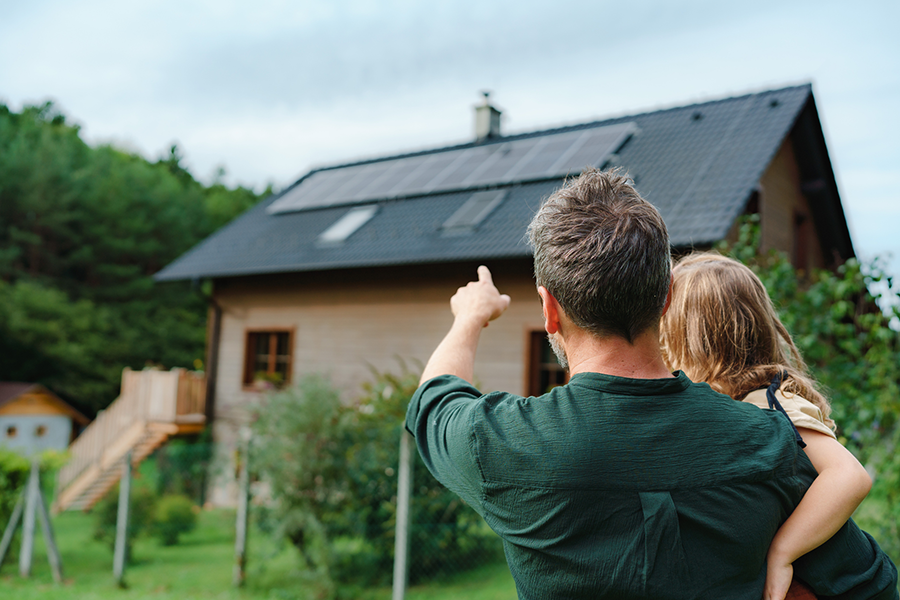Powering your home just got smarter. Distributed Energy Resources (DERs) allow you to generate and manage your own electricity using clean technologies like batteries, solar panels and even smart devices and appliances. As more Ontarians commit to climate action and energy independence, these resources are quickly gaining popularity.
If you’re new to DERs, don’t worry - this guide covers what they are, why they matter, and how you can make them work for you.

Why should you install a DER?
There are plenty of reasons to adopt DERs:
- Stay powered during outages
If you pair rooftop solar panels with a battery storage system, for example, you can generate a short term reserve of power to use should a storm disrupt your connection. - Save on your monthly bill
When you rely on your own generated power, you tap into the grid less frequently, and you pay less each month. What’s more, we have programs that provide on-bill credits if you send your excess power back to the grid. - Reduce your carbon footprint
Most DERs produce clean energy. Adopting these technologies helps reduce your carbon footprint, which is something you can feel good about.
Four ways to use your DER
DERs can serve different purposes depending on your setup. Here are four common ways they’re used:
1. Emergency back-up generators
Although most generators use fossil fuels, they still fall under the DER umbrella. The next time a storm, an accident or a squirrel causes an outage, consider using a portable or standby generator to bring your home back to life. Portable generators work well during short outages. Their output is small but reliable. They can power kitchen appliances, power tools, lights, laptops, phones and other devices. Standby generators, however, offer more coverage. Installed as part of your home’s power supply, they can energize entire circuits, starting automatically when you need them and turning off when you don’t. Unfortunately, they run on propane or natural gas and produce fossil fuel emissions.
For a cleaner option, you can find generators that produce zero emissions. Solar-powered generators work quietly and efficiently. And although they have lower outputs than their fuel-based competitors, they’re safe to use indoors. Additionally, you can use a Tesla or Lightning F-150 battery to power your home for up to three days.
2. Net metering
If you’d like to save on your energy bill, consider installing solar panels and joining our net metering program. As a net metering customer, you’ll be able to generate and use your own electricity. This means you’ll use our supply less frequently and, therefore, lower your bill. This program also gives you the option to send excess electricity to the grid for non-cash credits.
3. Load displacement
If you’d prefer to generate energy exclusively for your own use, you can join our load displacement program. Like the net metering program, it allows you to generate and use your own electricity to reduce your monthly bill. But you won't get any credits for excess generation, so it's important to size your system only for your own needs.
4. Stand alone generation
Large-scale energy producers may be able to opt into our stand alone generation program. This allows you to send all of the energy you generate to the grid for compensation—usually at a set rate per kilowatt-hour.
Incentives
Cost is currently a barrier for most Canadians, but various organizations are offering incentives to make this technology more affordable. The Government of Ontario, for example, offers up to $10,000 in rebates for homeowners who install both solar panels and a battery storage system, under a load displacement arrangement. To learn more about available programs and incentives visit the Save on Energy website.
Next steps
Want to learn more? Check out our ThinkEnergy podcast, where Trevor Freeman discusses DERs and explores their benefits and uses.
Ready to get started? If you’d like to connect a DER to your home or business, fill out the application form on our website. And if you have any questions about the connection process, contact us at [email protected].